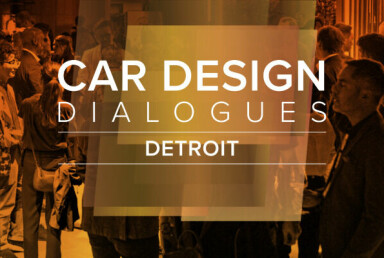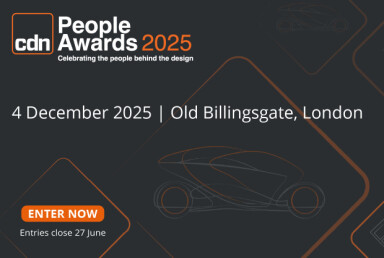XPeng's software-led design
"Design is not the place to save money"

XPeng’s design leaders explain how a diverse, digitally driven studio, proprietary AI and ties to Chinese consumers are reshaping vehicle development at speed
Car Design News visited XPeng’s design leaders JuanMa López and Joan Melenchon in their growing design headquarters in Shanghai to hear about their rapid two year design process powered by in-house AI and local talent in Shanghai.
The VP of design and creative design director, respectively, explain why design remains an investment, how Chinese customer tastes are evolving and why CMF matters today.
JuanMa López: We’re preparing for a big move. The team has grown much faster than expected. It was supposed to start with around 68 people, but because of changes in the company’s project development structure and the success we showed last year, management decided to give us two buildings and keep expanding. We’ll have creativity here, and design operations and digital design in the second building.
Car Design News: So that one will be purely digital?
JM López: Yes, it will. Both buildings will be dedicated to design. Right now it’s still under decoration, but you’ll see it all finished soon. The speed of construction here in China is incredible.
CDN: When you reach full headcount, how many people will there be?
JM López: By the latter half of this year we’ll be close to 200.
CDN: And you’re hiring across all disciplines?

JM López: Yes. We have CMF, exterior, interior and admin teams here. Downstairs will be exterior design and clay. In the second building, the ground floor will be interior design, a large presentation room, and reception. The first floor will be digital design, with a restricted supplier area. Digital is becoming very powerful because we’ve found the right people. We have an exceptional local Chinese leader who’s revolutionising the process.
Digital is not just a way to save money or avoid clay models. It’s about achieving the best final result
CDN: How successful is the digital design process proving?
JM López: I’ve been implementing full digital design processes since my time at BYD and later at ChangAn. Here at XPeng we’ve gone even further, we now have all the deliverables that many OEMs can’t even imagine, thanks to the strength of our digital team.
The third floor will host design operations and the Digital Technical Group. We have all design disciplines here in Shanghai as well as in Guangzhou, working in a healthy competition. The company set up a mechanism where both studios work on the same projects, pushing each other to improve. You can really see the quality rise with each round. The full digital process also gives management great confidence, because they can see the cars as if they were real.
CDN: What do you think is driving that success?
JM López: I think it’s experience and the team. I’ve learned over the years what works and what doesn’t. I’ve been very careful in selecting the right people for this project. We now have 18 nationalities – it’s a boutique studio focused on quality rather than quantity.

Digital is not just a way to save money or avoid clay models. It’s about achieving the best final result. We still use clay – our head of clay, Matt Nicholson, is British. I worked with him years ago at Ferrari, and he’s one of the best in the business.
We also follow a very structured process. For the first time, I’ve implemented the complete digital workflow with every deliverable included. I can say with humility that we now have one of the most advanced and efficient design processes in the world. We’ve taken the best practices from leading OEMs and innovated beyond them.
CDN: What does that process look like, especially with AI becoming more common?
JM López: Joan can explain more about that; we call it the “full digital process plus AI.” Our AI isn’t a free or generic system, it’s a powerful, proprietary platform that has cost millions to develop, supported by our company’s expertise in autonomous driving and AI.
Joan Melenchon: Yes, efficiency is key. From scratch to launch, a car takes around two years, so the design process has to be very fast and precise. Unlike at other OEMs, our design reviews don’t just analyse styling, we include technical detailing, sections, and cross-functional input right from the start. Designers collaborate closely with engineering and quality teams, which speeds everything up and improves results.
Design is not the place to save money. My mentors, like Walter de Silva and Giorgetto Giugiaro, never saw design as a cost. It’s an investment – JuanMa López
AI supports creativity at the early stage but also helps us validate feasibility very quickly. We’re developing our own interface and internal AI tools, too, so we don’t depend on external data. Our CAD and visualisation teams are building what we call the “AI body,” which will be a powerful in-house tool in the near future.

We have a strong combination of young local talent with exceptional 3D skills and experienced international designers. This balance makes the process agile and culturally connected. We prefer to work mainly with local talent and only bring in external experts when they add real value. Staying connected to the local ecosystem is what gives the studio long-term stability.
JM López: Another important point is that our AI is trained exclusively with our own design philosophy and models. Many brands use generic datasets, and you can tell – their designs start to look similar.
JM: Exactly. Over the past six months we’ve fed our AI platform with more than 100,000 internal images, refining that to about 5,000 for training. By mid-October we’ll complete the first phase, meaning we’ll have an AI fully based on our own material. It’s a continuous process – the more we feed it, the more powerful it becomes. Eventually it will support sketching, modelling, and beyond.
CDN: So everyone can use the tool?
JM: Yes, the goal is to make it simple and accessible across all teams: CMF, design, and even project management.
CDN: A pretty comprehensive use of AI
JM López: Yes, many companies use generic AI platforms, and it shows. We’ve invested heavily, thanks to the vision of our CEO, He Xiaopeng. The first beta version launched in October, and we expect 3D modelling capabilities soon.
CDN: It’s interesting because the usual story about AI is that it saves money, but your approach seems to be the opposite – a major investment.

JM López: Exactly. Design is not the place to save money. My mentors, like Walter de Silva and Giorgetto Giugiaro, never saw design as a cost. It’s an investment. You can save money elsewhere, but great design pays back through emotion and customer connection. That’s why our CEO is investing millions in design and AI. People buy cars for design and emotion, not just mechanics.
JM: Any serious development requires investment. If you only look for short-term profit, you’ll struggle to innovate.
CDN: Do you think management sometimes finds it difficult to quantify the value of design?
JM López: Our CEO is very rational and believes everything can be measured, even how beautiful a design is. We’re developing ways to quantify beauty and track how well designs align with our parameters. It makes the process more objective and reduces risk.
CDN: So you gather data from customers to help quantify that?
JM López: Yes, we run clinics like most OEMs in China. They’re not about changing designs drastically but confirming and validating direction. The data supports decisions; it’s a confirmation step rather than a replacement for creativity.
JM: The company’s mindset comes from our founder’s software engineering background. There’s a constant focus on learning and steady progress, which applies to every department. Every few months we see big improvements.
CDN: And what’s the product strategy?
JM López: We have a clear product portfolio and future plan, with targets through and beyond 2027. Design is involved from the very beginning, even before the design phase officially starts. Unlike some companies where design simply reacts to existing platforms, here we help shape them.
I see XPeng as the Chinese Tesla – JuanMa López
CDN: How are Chinese consumers changing?
JM López: They’re evolving fast. The market is maturing, customers are more demanding and sophisticated. Features that were acceptable six years ago aren’t anymore. Chinese buyers expect full equipment even in small cars, and design expectations are rising too. China is now setting trends globally in many aspects of car design.
CDN: And the way people use cars here is changing too, right?
JM López: Yes. Cars often act as a third space between home and work, so functionality and comfort are key. Large screens and immersive interiors are now standard, even in compact cars.
JM: Exactly. Space in the back seat is very important here, even in ride-hailing cars. It’s a different cultural approach: comfort and interactivity matter as much as performance. Asian customers are deeply connected to the digital world, and they expect that integration in cars too.

But beyond that, they love to be surprised. You see highly customised interiors, even in luxury cars. It’s part of the culture where personalisation, colour and playfulness are embraced. As designers, we have to understand this while keeping a global balance.
CDN: Who do you see as your main competitors?
JM López: We learn from every brand. We benchmark aspirationally, not just by sales, but by excellence. For example, we might study a BMW 7 Series, not because it’s a direct competitor but because we can learn from it. We don’t compare ourselves to BYD or others; our philosophy and products are very different. Personally, I see XPeng as the Chinese Tesla – that’s my view.
CDN: And what about colour and material trends?
JM López: That’s a complex topic. In Europe, interior colours are usually limited to light or dark, but in China customers expect many choices. We rely on global and local data from suppliers and agencies to guide our CMF strategy. We combine that data with our own design DNA to build a coherent philosophy.
Our CEO is even investing in more paint lines to expand exterior colour options. For interiors, we often offer four or five colour variants per model. The big trend is soft materials – everywhere. Even in hidden areas, customers expect premium tactility. Some colours that would never sell in Germany, for example, are very popular here.
We also allow customers to wrap their cars in personalised colours and change them yearly if they wish. It’s all about choice and self-expression, something that defines the Chinese market today.




